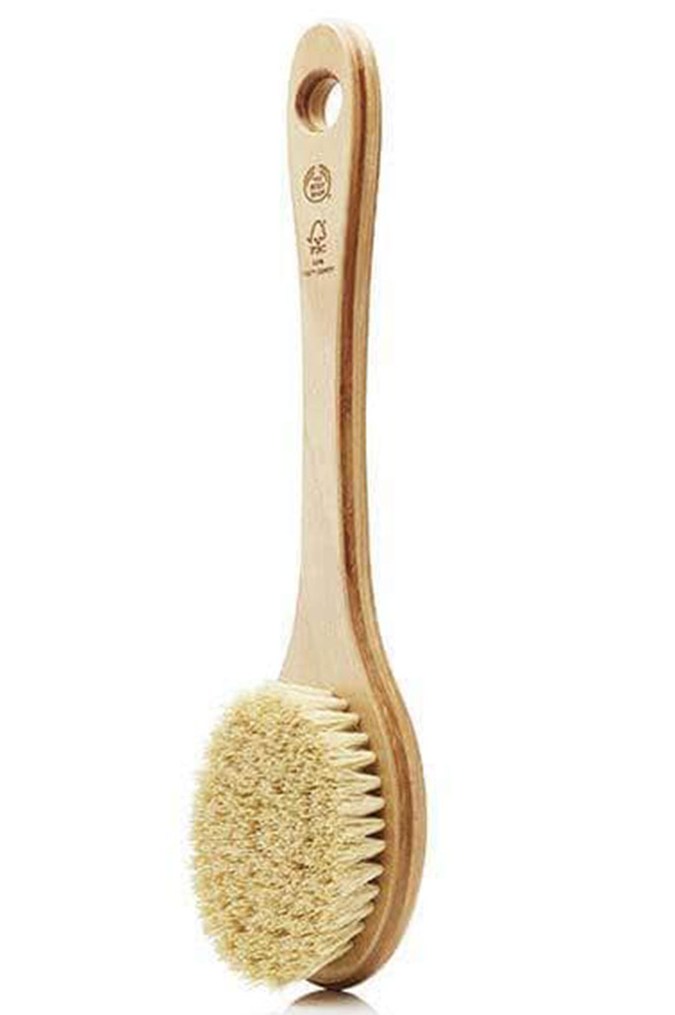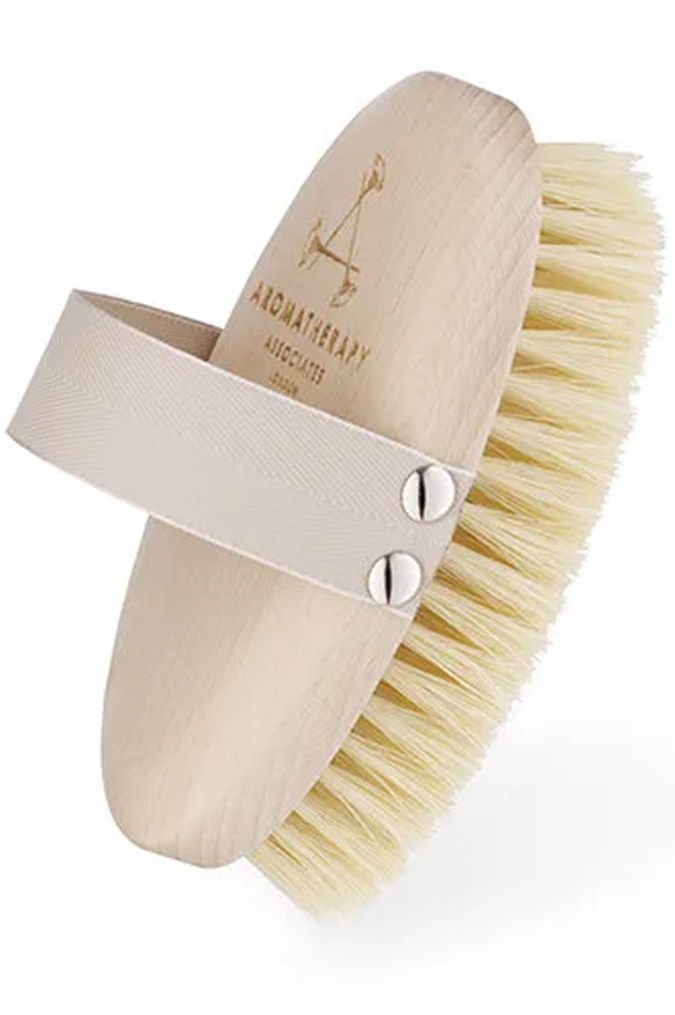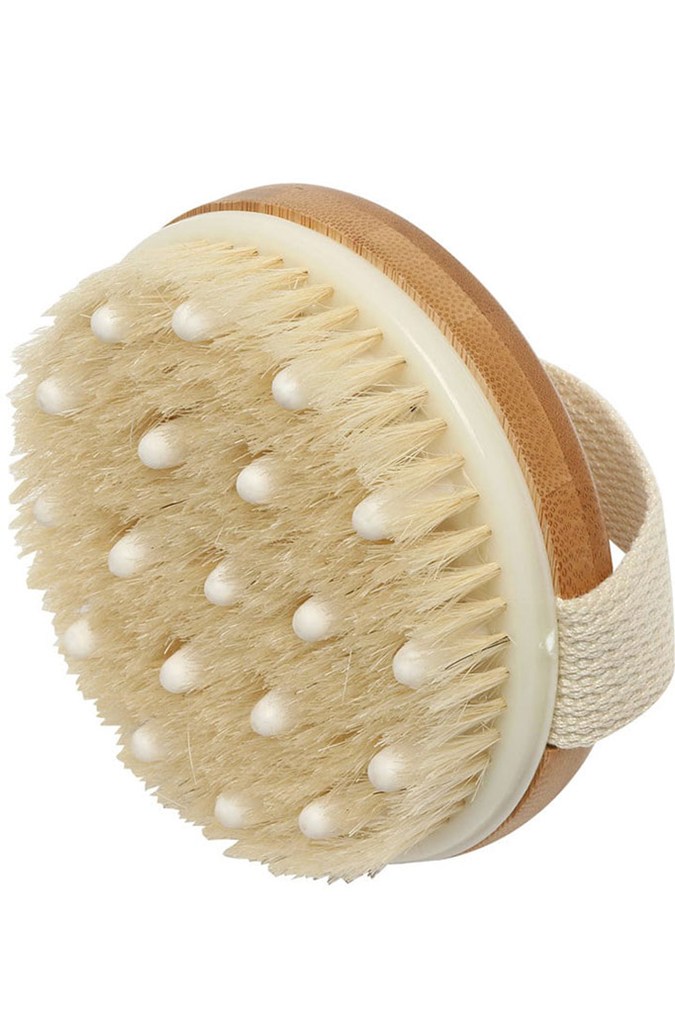Can dry body brushing really stop cellulite?

An expert weighs in on this celeb-approved beauty trend
There’s always a new beauty treatment getting around that promises to smooth dimples, tone your butt or get rid of cellulite. But to be honest, most of them usually turn out to be a total flop and there’s nothing worse than wasting your time and money on marketing fluff and temporary fixes.
Cue dry body brushing – does it actually live up to the hype?
Dry brushing, as you can probably guess, quite literally involves brushing the skin on your body (thighs, stomach, butt and arms – the whole shebang!) with a soft bristled brush in order to give it a brighter, smoother appearance. It’s become a super popular treatment amongst celebrities (just ask Gwyneth Paltrow – her wellness site goop has a whole tutorial on it!), and claims to reduce cellulite, improve the appearance of the skin and help to regulate the skin cell cycle.
Sounds pretty good, right? But does it actually work? We spoke to dermal therapist Dr Giulia D’Anna from Dermal Distinction to find out if this is actually an important step our body care routine is missing.
What are the benefits of dry brushing?
According to Dr D’Anna, dry brushing can help improve circulation and lymphatic drainage, and promote glowing, smoother skin: “As we get older, our skin cell turnover can become sluggish, and we need to do everything we can to improve the rate of replacement. By sloughing away the dead skin cells, by literally brushing the dead skin cells away, the stem cell layer speeds up turnover. This is great for skin vitality, radiance and brightness of the skin. Our legs are less likely to get ingrown hairs, too.”
“Our skin becomes more vibrant through increased skin circulation, which is great for delivering nutrients and oxygen to the skin. And let’s face it, whenever skin is oxygenated, it is healthier and glowing.”
Dr D’Anna notes that dry brushing is also an effective physical exfoliator, especially if you have sensitive skin that doesn’t respond well to the usual AHAs (alpha hydroxy acids) contained in skin care-based exfoliating products and body scrubs. However, just be careful of how hard you’re scrubbing. “It is really common that you will press harder in easy-to-reach areas like the front of the legs, and less hard on the back of the legs and buttocks,” says Dr D’Anna, who warns about over-exfoliating accessible areas. Keep your pressure firm but not forceful.
So, can dry brushing get rid of the appearance of cellulite?
“At this stage, there are no medical studies to show a reduction in cellulite with regular dry body brushing,” says Dr D’Anna. “Although abuzz in the celebrity world with supposed benefits of reduced cellulite after dry brushing, this is not quite true. Anatomically, cellulite is due to the compartment storage of fat in the skin; very much like honey in a honeycomb, fat appears dimpled. So dry brushing cannot break up the fat compartments, but it can certainly reduce the appearance of the dimples in skin."
How to dry brush properly
If you want to nab yourself some smooth skin and are considering giving dry skin brushing a whirl, we recommend using a brush made with soft, ultra-fine bristles (we’ll get onto which ones to choose below!) and rub the brush over your skin before you shower (the brush and your body should be dry).
So, what’s the best technique to use during a brushing session? Circular motions? Surprisingly, no! Dr D’Anna suggests using upwards strokes to assist blood circulation and the lymphatic system. “I would recommend that you work from the feet upwards, slowly moving closer to the thighs, stomach and so on towards the heart. After all, the heart is the central area of the circulatory system, so to make the most of dry brushing we need to assist our body to bring fluid upwards to the heart.”
Interesting! Has anyone else just been aimlessly scrubbing around their whole body? Because, SAME! “Don’t forget to brush your feet too, as the skin is always thicker here. I would recommend asking your partner to assist in the areas that are hard to reach, and also [brushing areas] prone to ingrown hairs and dead skin build-up. This is particularly common on the buttocks,” she says.
Afterwards, jump in the shower and wash your skin, before hopping out and finishing your morning routine (or nightly routine!) with a nourishing body oil or hydrating moisturiser.
“Since skin cells are created every 28 days, it is important to exfoliate or dry brush no more than once a week to avoid being too harsh on your skin," says Dr D'Anna.
Keep in mind that skin brushing may not be for you if you have very sensitive skin or skin conditions such as eczema, psoriasis or extremely dry skin, as it could aggravate the condition.
Dry brushes to try
Now you’ve got your dry brushing technique down pat, you’re going to want to select the right kind of body brush. Dr D’Anna recommends looking for a natural bristle brush, rather than synthetic ones. Some of our favourites include The Body Shop Cactus Long Handle Brush, Aromatherapy Associates Revive Body Brush and Ecopure Bath Massaging Hand Brush.

The Body Shop Cactus Long Handle Brush

Aromatherapy Associates Revive Body Brush

Ecopure Bath Massaging Hand Brush
Are you wondering how you ended up with those annoying ‘orange peel’ bumps in the first place? Here’s everything you need to know about cellulite, straight from a dermatologist.
What do you think of dry body brushing? Have you tried it before? Let us know your experience in the comment section below.
Main image credit: @elsahosk

Erin Docherty is a Beauty Writer for BEAUTYcrew, Beauty Editor for Women's Health magazine and a Grooming Writer for Men's Health magazine. She has a keen interest in cosmeceutical skin care and is currently working on minimising her 9-step skin care routine – because ain’t nobody got time for that. When she’s not writing about the latest beauty news, or applying copious amounts of serum, you can find her spending all her money in Sephora.







